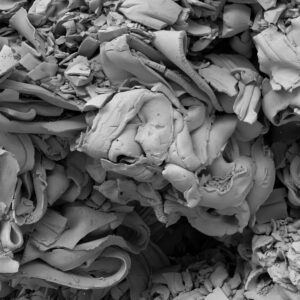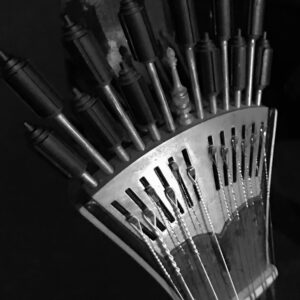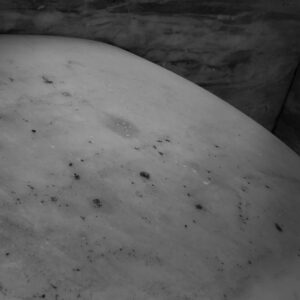“. . . to be able to accept the paradox that every one of us is the most important thing there is in the universe—and at the same time not more important than a fly or a blade of grass.”
“The mentally healthy person is the person who lives by love and reason, who respects life, his own and that of his fellow man.”
— The Sane Society, Erich Fromm, 1955
 We are hardwired to be social, but unlike herding animals, we create hierarchies in our social order, more like predatory animals. In contrast to predatory animals, our social ties have many more facets. Organization is critical for our complex social structure. For organization we need plans to guide group efforts. Therefore someone needs to be in a position to oversee the group and keep the plans on track. Here’s where it gets tricky.
We are hardwired to be social, but unlike herding animals, we create hierarchies in our social order, more like predatory animals. In contrast to predatory animals, our social ties have many more facets. Organization is critical for our complex social structure. For organization we need plans to guide group efforts. Therefore someone needs to be in a position to oversee the group and keep the plans on track. Here’s where it gets tricky.
Our social nature is apparently geared more towards following than leading. If you look at human behavior from a distance, the reason is clear. Following is easy. We are basically lazy, always taking for the path of least resistance. It’s a law of nature to keep our energy expenditures at a minimum, and that includes our mental energy expenditures. This leaves a vacuum for the slightly less lazy to fall, whether qualified or not, whether willing or not, into leadership positions. It also appears that we have in us a natural leader gene too, even if it takes a bit more effort to express. That gene programs us for the taste of influence and power. There are a few who more readily develop that taste and willingly strive for the dominant position, whether qualified or not. In either case, filling in the gap voluntarily or by default, we’re screwed. Power is highly addictive. With lots of lazy followers, and a few obsessed leaders, you can see how this could easily spin out of control. History (and current events) has plenty of examples.
Humans have survived and come to ascendency around the globe over the last few thousand years not by being the strongest, or fastest, or having the most acute senses. The only way that could happen was by our natural talent for working together. Learning through imitation, like monkeys, and more significantly, teaching one another to pass on acquired knowledge without having to relearn everything individually. The abilities to learn, exchange knowledge and cooperate have been the keys that make up for our individual limitations. So, it’s obvious, we need leadership. We need a top-down, follower-the-leader structure to make things work.
Then, with a little closer inspection, perhaps not.
There’s something not quite right with this picture. We’ve got problems that have only grown bigger with every billion increase in population. We’ve been practicing this top-down system since the dawn of civilization. After the passing of generation after generation, you’d think we’d have it down by now. Instead, we’re still dealing with the same problems : genocide, poverty, exploitation, oppression, conflicts, corruption, . . . It seems we haven’t learned much from our history. What gives?
Ask the wrong questions : get the wrong answers.
If cooperation is the key to human survival, how does a top-down, hierarchic system create co-operation? If cooperation is practiced in a one-way direction from top to bottom, is it cooperation or is it dictation? Is dictation cooperative or non-cooperative? If cooperation is the key to our success, why do we keep competing with each other instead of focusing on cooperation?
Cooperation is a two-way street. It requires feedback, joint effort, communication in both directions. Those requirements are not satisfied in a top-down structure. Generally, leaders don’t listen, and followers don’t think.
Cooperation requires coordination. We need coordinators, not leaders. We need facilitators, not followers. Coordinators don’t dictate, they organize. Facilitators don’t follow, they get things done and in the process they actively participate with the organizers. Information flows in both directions. They make decisions together, contribute to the group effort and understand that no one has all the answers. It’s not top-down, it’s side by side.
That sounds so easy.
Certainly, it’s not so easy if we remain stuck in our old thought patterns of leaders and followers. It’s not easy if the average person doesn’t take the responsibility of cooperation. It’s not easy if we persist in believing that competition is beneficial for the individual and the group. It’s not easy if our education system remains locked in its old ways. It’s much easier to blindly continue with our preconceived notions. It’s much easier to parrot received opinion. It’s much easier to follow orders. Then when things go wrong we can say, “It’s not my fault. I was following orders.”
Unfortunately, following orders is a lame excuse. Followers are equally guilty.
Do the dictators and leaders of the world actually murder anyone? Do they make anything? Do they personally take away human rights and civil liberties? Or does it take an army of followers to go along with the given orders to create a mess?
Just asking.
Also read : Competition Makes the World Go ’round & Fromm Here to Nowhere
![[art]by[odo]](https://artbyodo.net/wordpress/wp-content/uploads/2011/03/cropped-Header.jpg)
















